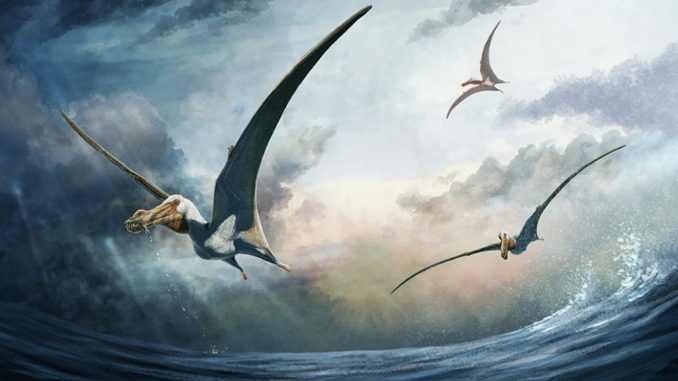
New pterosaur discovered in Australia: ‘A flying monster‘
Bones of a new species of pterosaur have been unearthed in northeastern Australia, in the state of Queensland. This is evident from scientific research published in the journal Scientific Reports. The new species has already been given a name: Haliskia peterseni.
A pterosaur was a flying reptile during the same period as the dinosaurs. Dinosaurs and pterosaurs share an ancestor, but are not part of the same group.
The new pterosaur’s genus name Haliskia comes from classical Greek and describes a flying creature that casts a shadow on the sea. The species name, peterseni, refers to the discoverer of the bones: Kevin Petersen, curator of the Kronosaurus Korner Museum, discovered the bones in 2021.
Most complete pterosaur
According to researcher Adele Pentland, it is the most complete pterosaur yet found in Australia. “The specimen has complete mandibles, a tip of an upper jaw, 43 teeth, as well as vertebrae, ribs, bones of both wings and part of a leg,” she says in Scientific Reports. “Very thin and delicate throat bones are also present. This indicates a muscular tongue, which made it better at eating fish and molluscs.”
The new species had a wingspan of about 4.6 meters. “The Haliskia must have been a terrifying monster 100 million years ago,” says Pentland.
Pasha van Bijlert, paleontologist and researcher at Naturalis, is extremely happy with the new discovery. According to him, finding pterosaur bones is rare. “It is a reptile that could fly and anything that can fly is by definition lightly built. If you are lightly built, your bones are not often preserved. You have to be very lucky to find bones from this,” he says in the NOS Radio 1 News.
Boost for science and tourism
The bones of Haliskia peterseni will soon be on display at the Kronosaurus Korner Museum. According to Petersen, the discovery is a boost for science, education and regional tourism. “I am very happy that my discovery is a new species, because my passion is spreading knowledge about prehistoric species.”

Be the first to comment